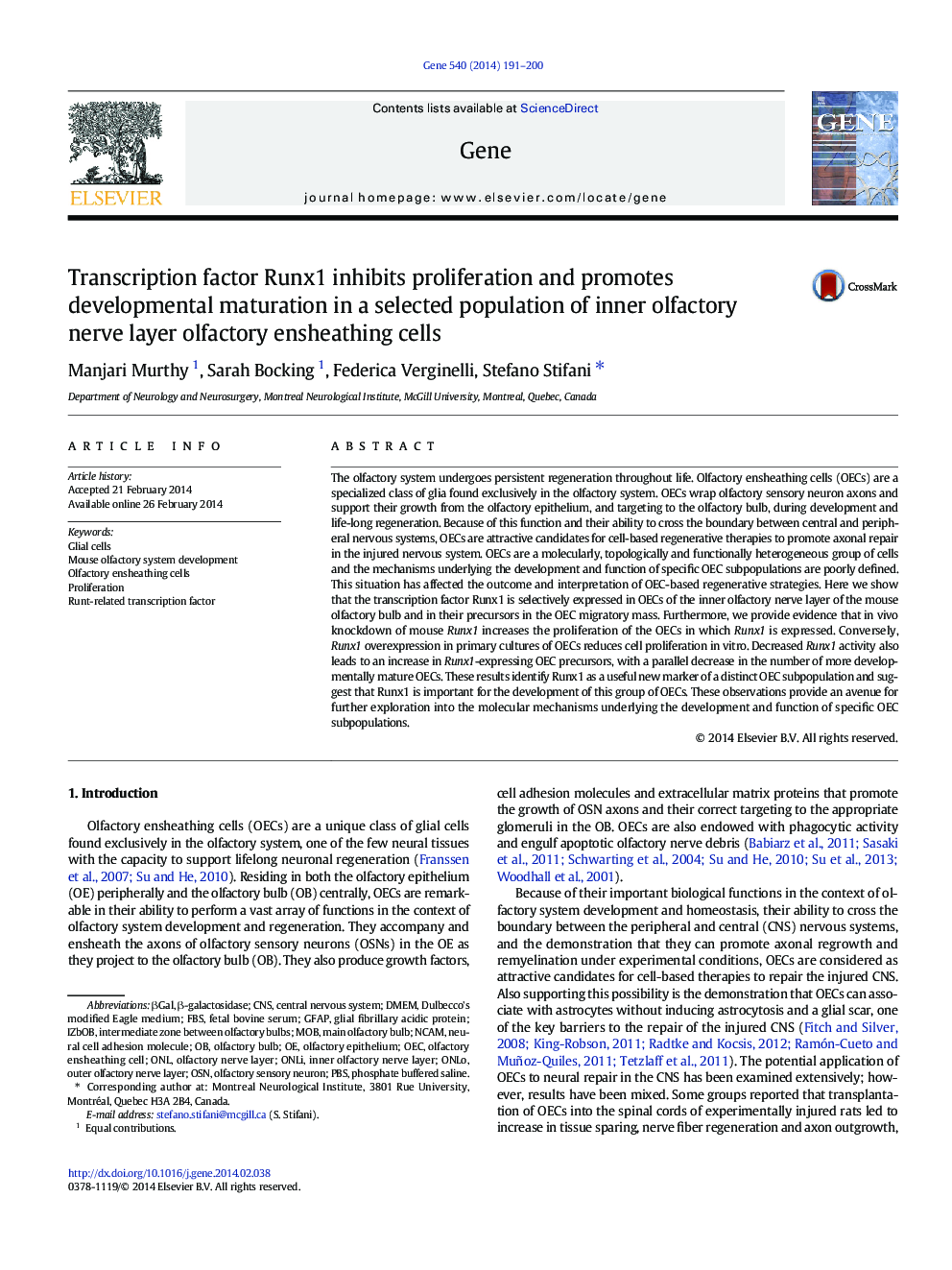| کد مقاله | کد نشریه | سال انتشار | مقاله انگلیسی | نسخه تمام متن |
|---|---|---|---|---|
| 5905798 | 1569846 | 2014 | 10 صفحه PDF | دانلود رایگان |

• Transcription factor Runx1 is selectively expressed in a subpopulation of OECs.
• Runx1 + OECs are located in the inner region of the olfactory bulb nerve layer.
• In vivo knockdown of Runx1 causes increased proliferation of OECs.
• In vitro overexpression of Runx1 causes decreased proliferation of OECs.
• In vivo knockdown of Runx1 delays OEC developmental maturation.
The olfactory system undergoes persistent regeneration throughout life. Olfactory ensheathing cells (OECs) are a specialized class of glia found exclusively in the olfactory system. OECs wrap olfactory sensory neuron axons and support their growth from the olfactory epithelium, and targeting to the olfactory bulb, during development and life-long regeneration. Because of this function and their ability to cross the boundary between central and peripheral nervous systems, OECs are attractive candidates for cell-based regenerative therapies to promote axonal repair in the injured nervous system. OECs are a molecularly, topologically and functionally heterogeneous group of cells and the mechanisms underlying the development and function of specific OEC subpopulations are poorly defined. This situation has affected the outcome and interpretation of OEC-based regenerative strategies. Here we show that the transcription factor Runx1 is selectively expressed in OECs of the inner olfactory nerve layer of the mouse olfactory bulb and in their precursors in the OEC migratory mass. Furthermore, we provide evidence that in vivo knockdown of mouse Runx1 increases the proliferation of the OECs in which Runx1 is expressed. Conversely, Runx1 overexpression in primary cultures of OECs reduces cell proliferation in vitro. Decreased Runx1 activity also leads to an increase in Runx1-expressing OEC precursors, with a parallel decrease in the number of more developmentally mature OECs. These results identify Runx1 as a useful new marker of a distinct OEC subpopulation and suggest that Runx1 is important for the development of this group of OECs. These observations provide an avenue for further exploration into the molecular mechanisms underlying the development and function of specific OEC subpopulations.
Journal: Gene - Volume 540, Issue 2, 1 May 2014, Pages 191–200